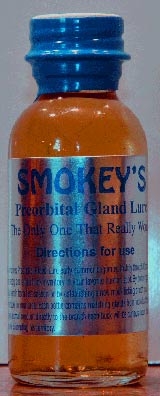by Steve Sorensen
 1. Travel corridor: Find a licking branch in a travel corridor bucks use. Base the location on past observation, old rubs and natural funnels. You can use a licking branch that was used last year, establish a new one or make your own by tying a new branch about five feet off the ground.
1. Travel corridor: Find a licking branch in a travel corridor bucks use. Base the location on past observation, old rubs and natural funnels. You can use a licking branch that was used last year, establish a new one or make your own by tying a new branch about five feet off the ground.
2. Licking branch: Before touching anything in the area, put on a pair of rubber gloves. Select a sturdy but flexible branch. My experience is that limbs from maple, white oak, ash, beech or poplar produce better results than pine and black cherry. Notice the species deer in your area use. Don’t use a dead or fragile limb.
3. Application: Mash the tip of the licking branch with a pair of clean pliers. This allows the branch to hold the lure, and exposes the lure to more surfaces so that air currents can pick it up better. Dip the tip of the branch in a bottle of pre-orbital gland lure. Use just a tiny amount.
4. Camera: Set your camera so that it’s not looking into the sun and leave the area without crossing any primary trails.
5. Checking camera: Since this is a low-impact scouting method, don’t check your camera any more frequently than once every week to 10 days. Even if it rains, traces of the lure will stay on the licking branch.
Put these tips into practice with Smokey’s Pre-Orbital Gland Lure. Click here to order it now.
